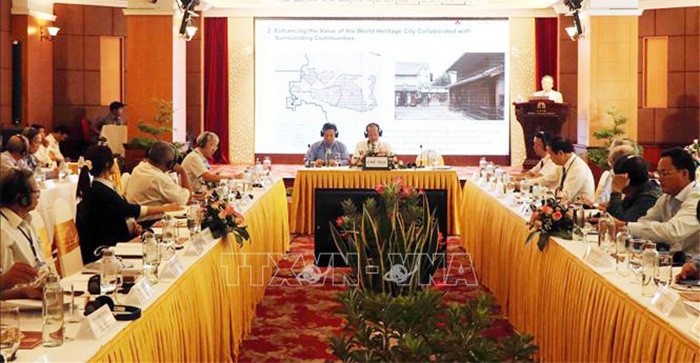On August 9, the Hue Monuments Conservation Center in collaboration with Waseda University (Japan) organized a workshop on "Research on the cultural landscape values of Hue Heritage and surrounding areas in preserving and promoting the values of the Hue Monuments Complex".

Conference scene
The workshop exchanged views on preserving the cultural landscape of the heritage buffer zone, moving towards developing plans and policies to protect the integrity, maintain and develop cultural, historical, landscape and environmental values, improve the effectiveness of heritage conservation and management associated with sustainable tourism development of Hue Heritage City.
According to researchers, in the assessment of the Nguyen Dynasty kings, Hue's geographical location was not only important in terms of transportation and defense, but also contained special meanings in terms of feng shui according to traditional Eastern concepts, influencing the prosperity and decline of the entire dynasty. Under the Nguyen Dynasty, important architectural clusters were designed in association with feng shui landscape elements such as mountains, hills, rivers, streams, and especially lakes. These are the cultural and landscape attributes that create the outstanding value of the world cultural heritage in the ancient capital of Hue.
The royal tombs of the Nguyen Dynasty are a complex of architectural works located in a poetic natural setting, containing distinct beauties such as the majestic Gia Long Tomb, the solemn Minh Mang Tomb, the simple Thieu Tri Tomb, the poetic Tu Duc Tomb, the lovely Dong Khanh Tomb, and the sophisticated Khai Dinh Tomb. The tombs in Hue are worthy of being considered the most brilliant achievements in the royal architectural heritage of the Vietnamese people, praised by international cultural heritage experts as a poetic masterpiece of urban architecture.
At the workshop, experts and researchers discussed and exchanged on the issue of heritage buffer zone management, the historical planning process of Hue Citadel, the work of preserving cultural landscapes in Hue Heritage Urban Area, feng shui factors in the planning of tombs of Nguyen Dynasty kings, etc.
Mr. Shigeru Satoh (Honorary Professor of Waseda University) said that, in addition to the need to protect the landscape of the relic according to regulations, the locality needs to develop a form of community ecotourism at the tombs of King Gia Long and King Thieu Tri to help people live with the heritage, recreate the heritage and sustainably protect the heritage.
Director of the Hue Monuments Conservation Center Hoang Viet Trung said that the results of the workshop will supplement the research on the project of Planning for the conservation, restoration and rehabilitation of the Hue Monuments Complex until 2030, with a vision to 2050, and the construction of a dossier to re-nominate the Hue Monuments Complex as a World Cultural Landscape Heritage according to the recommendations of UNESCO and the Ministry of Culture, Sports and Tourism.
According to VNA